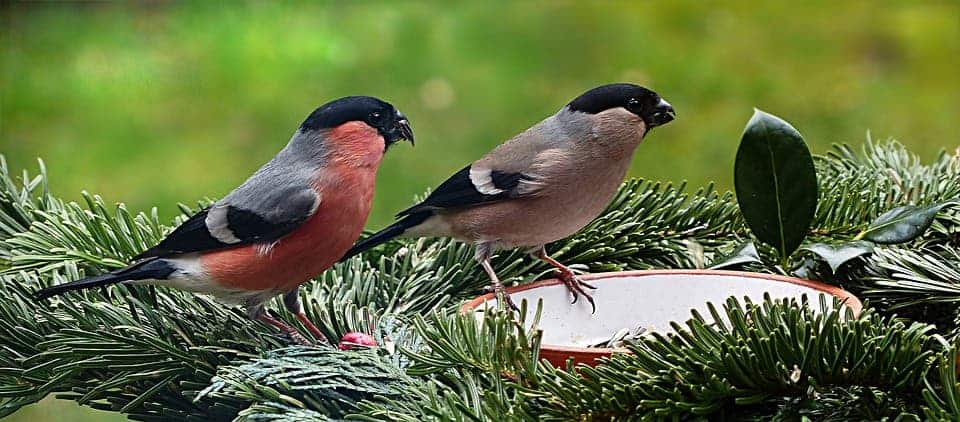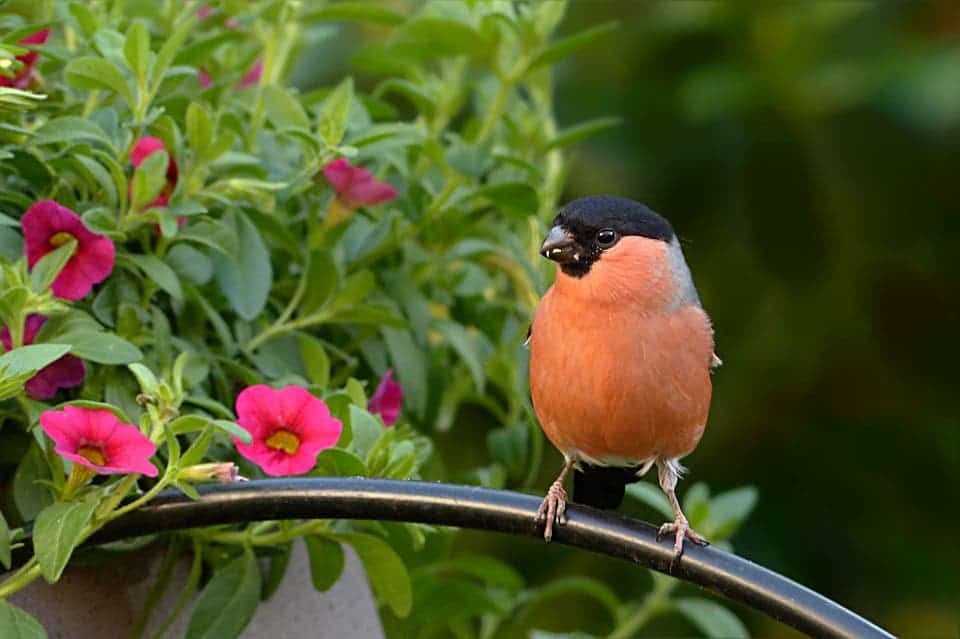A new study confirms what was long-time assumed about bullfinches: they keep the same partner throughout their lives.
Bullfinches (Pyrrhula pyrrhula) are small birds commonly found in the temperate areas in Europe and Asia. They are usually resident (non-migratory) birds, but some of the northern populations do move towards the warmer south during the winter.
However, recent years weren’t rosy for the bullfinches. Their large numbers and love of flower buds turned against them. They started to be viewed as pests during the 1970s, leading to a licensed control of the species. Even though this didn’t have an important impact on the birds’ populations, bullfinches suffered a decline due to the loss of arable weeds and intensification of agriculture.
Professor Olav Hogstadt banded 165 birds, comprised of 63 adults and 102 young birds. Hogstadt’s birds were migratory, making their monitoring much more difficult. He used a small feeder to lure and tag the bullfinches. Most birds were isolated individuals, though a small flock was also observed.
He discovered three pairs that stayed together for one winter, three that stayed together through two winters, and one pair that stayed together through three winters. He thus concluded that pair fidelity was true among bullfinches, confirming a long-standing assumption.
Why do these finches have such a romantic approach to life?
Actually, the answer is pretty logical. Having the same mate allows these birds to spare the energy of finding a new one each beginning of mating season. In this way, the frenzy of reproduction can be prolonged, and the little bullfinches saved the heartbreak of rejection — and the efforts associated with mating rituals.
“It’s a little embarrassing to tell people that it’s taken a quarter century of ‘research’ to confirm something that ‘everyone has known’ for several decades. On the other hand, it shows that if an assumption is repeated often enough, it’ll eventually become a reality,” Hogstad says.
Professor Hogstad from the Norwegian University of Science and Technology (NTNU) published the paper “Pair fidelity of wintering Bullfinches; observations over 24 years” in the journal Det Kongelige Norske Videnskabers Selskabs Skrifter. Vol. 2016.











